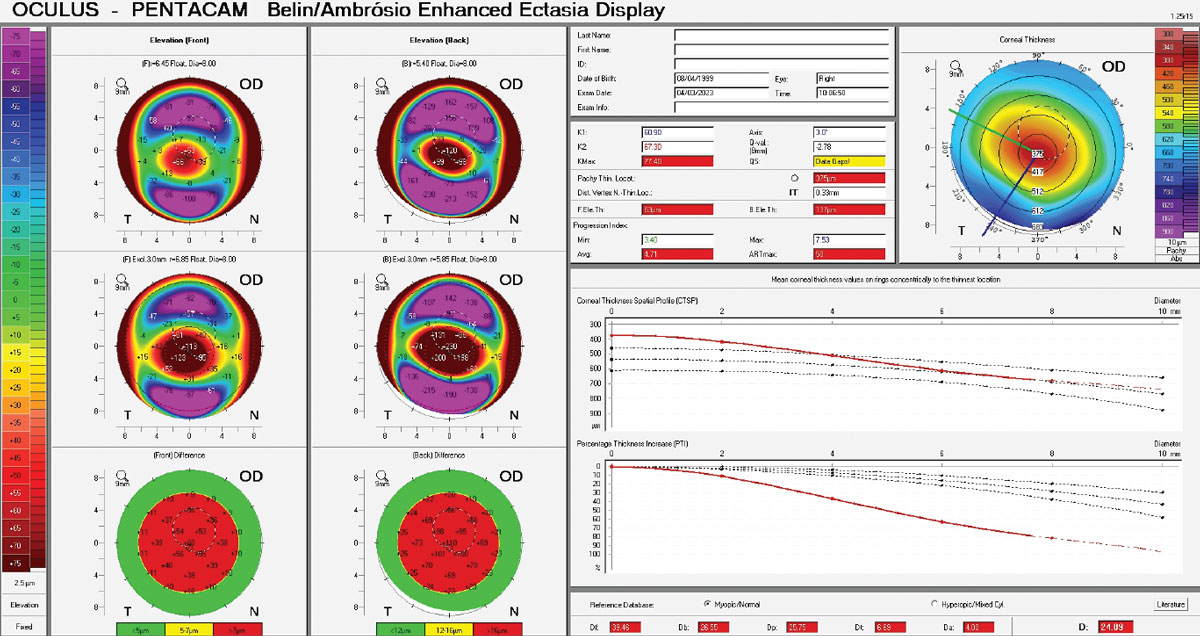 |
| Parents of keratoconus patients in this study demonstrated corneal characteristics such as reduced stiffness and thickness compared with controls. Photo: Julie Song, OD. Click images to enlarge. |
Previous research has proposed the possibility of a hereditary component in the etiology of keratoconus, as reports estimate a prevalence 15 to 67 times higher in first-degree relatives compared with the general population. To investigate this further, a recent study, published in the American Journal of Ophthalmology, examined the corneal tomography and biomechanical features of parents of keratoconus patients. Their findings, while not conclusive, suggest that certain parental corneal parameters may predispose children to the condition.
The study group consisted of 44 patients with keratoconus and their biological parents (n=88) as well as an age- and gender-matched control group (n=84). All participants underwent unilateral Pentacam Scheimpflug tomography, Corvis ST tonometry, visual acuity, refraction examination, axial length and slit-lamp examination.
Of the 88 parents included, two from different families had keratoconus. Additionally, three parents had thinner corneas with altered corneal biomechanical parameters compared with healthy controls.
Logistic regression analysis noted the following three major influential factors for keratoconus with a 73.3% accuracy in identifying affected offspring: parental corneal tomographic and biomechanical index, Corvis biomechanical index and thinnest point pachymetry. Of these, tomographic and biomechanical index had the highest diagnostic accuracy in identifying corneal ectasia in offspring, even in subclinical cases, demonstrating a strong specificity of 84.5%.
“Our study found that parents of keratoconus patients exhibited early signs of keratoconus in their corneal tomographic and biomechanical parameters,” the researchers summarized in their AJO paper. “Although these findings did not manifest clinically, the parents' corneas demonstrated characteristics such as reduced stiffness and thickness compared to healthy individuals.” They added, “The utilization of Pentacam and Corvis ST in our study effectively captured the hereditary traits associated with keratoconus.”
The researchers conclude that the observed abnormalities in the biomechanical properties of parents in this study add to the vault of evidence supporting a potential predisposition for the development of keratoconus in their offspring.
Li J, Zhang BN, Jhanji V, Wang X, Li D, Du X. Parental corneal tomographic and biomechanical characteristics of patients with keratoconus. Am J Ophthalmol. August 9, 2023. [Epub ahead of print]. |

